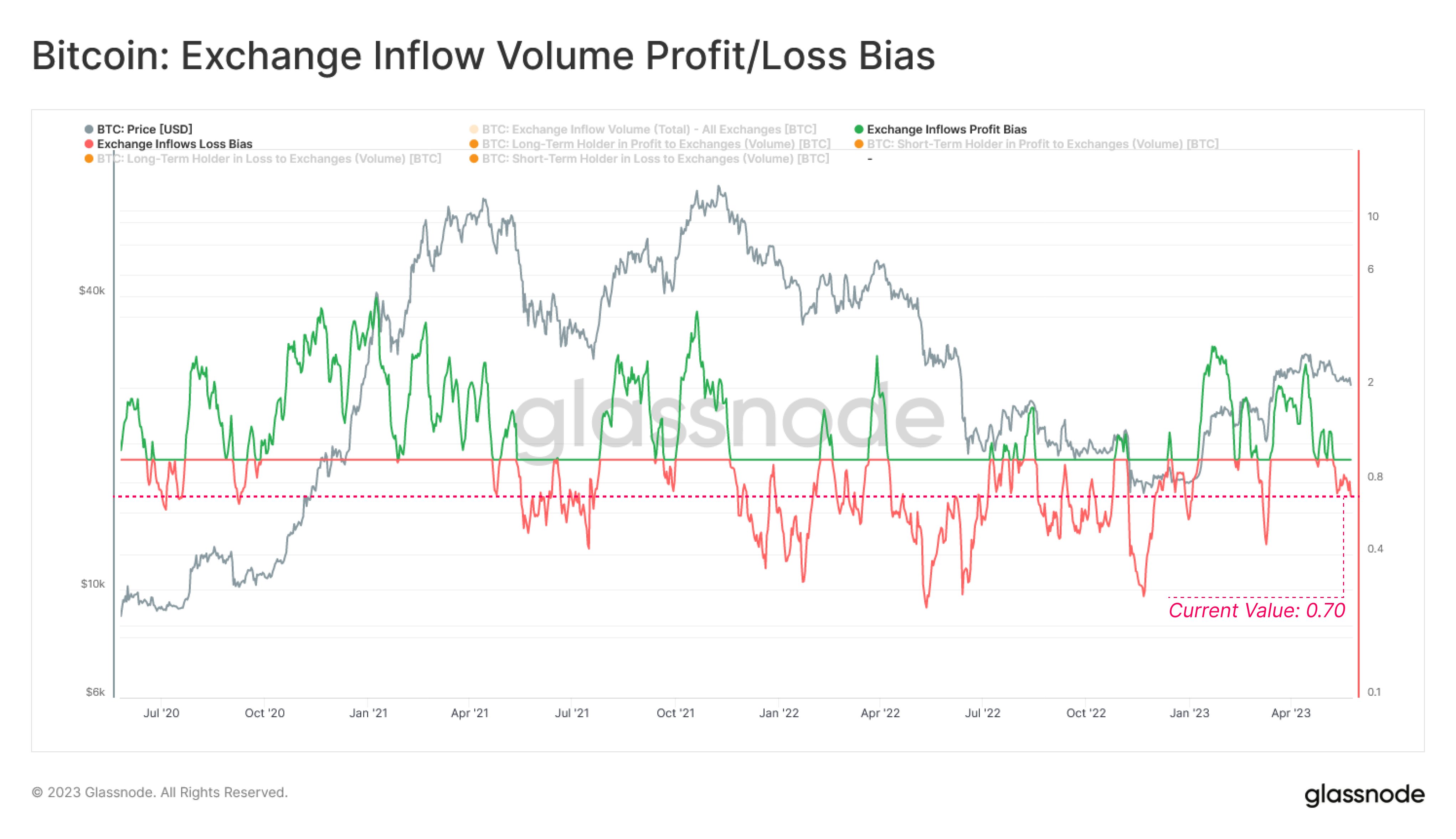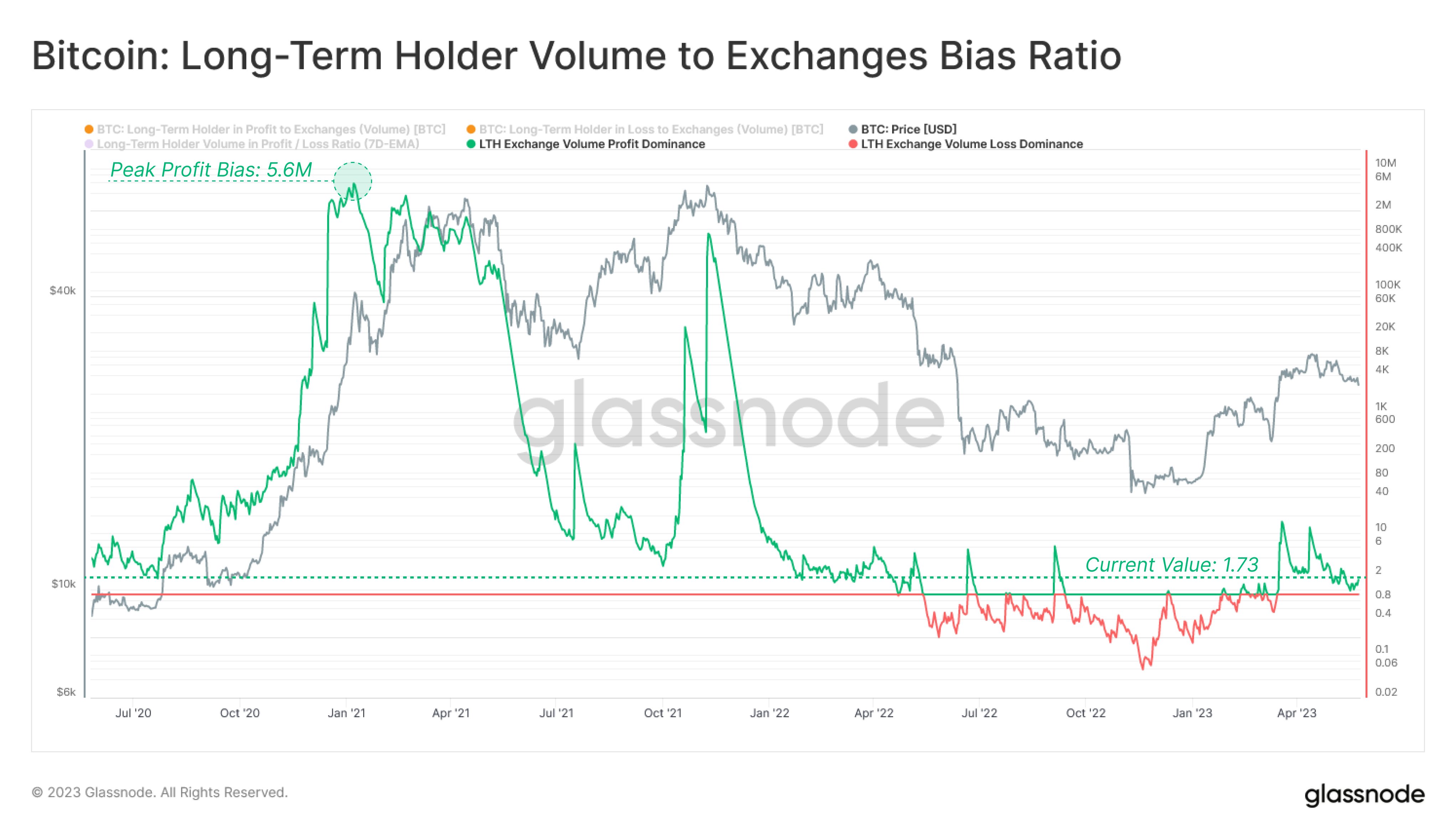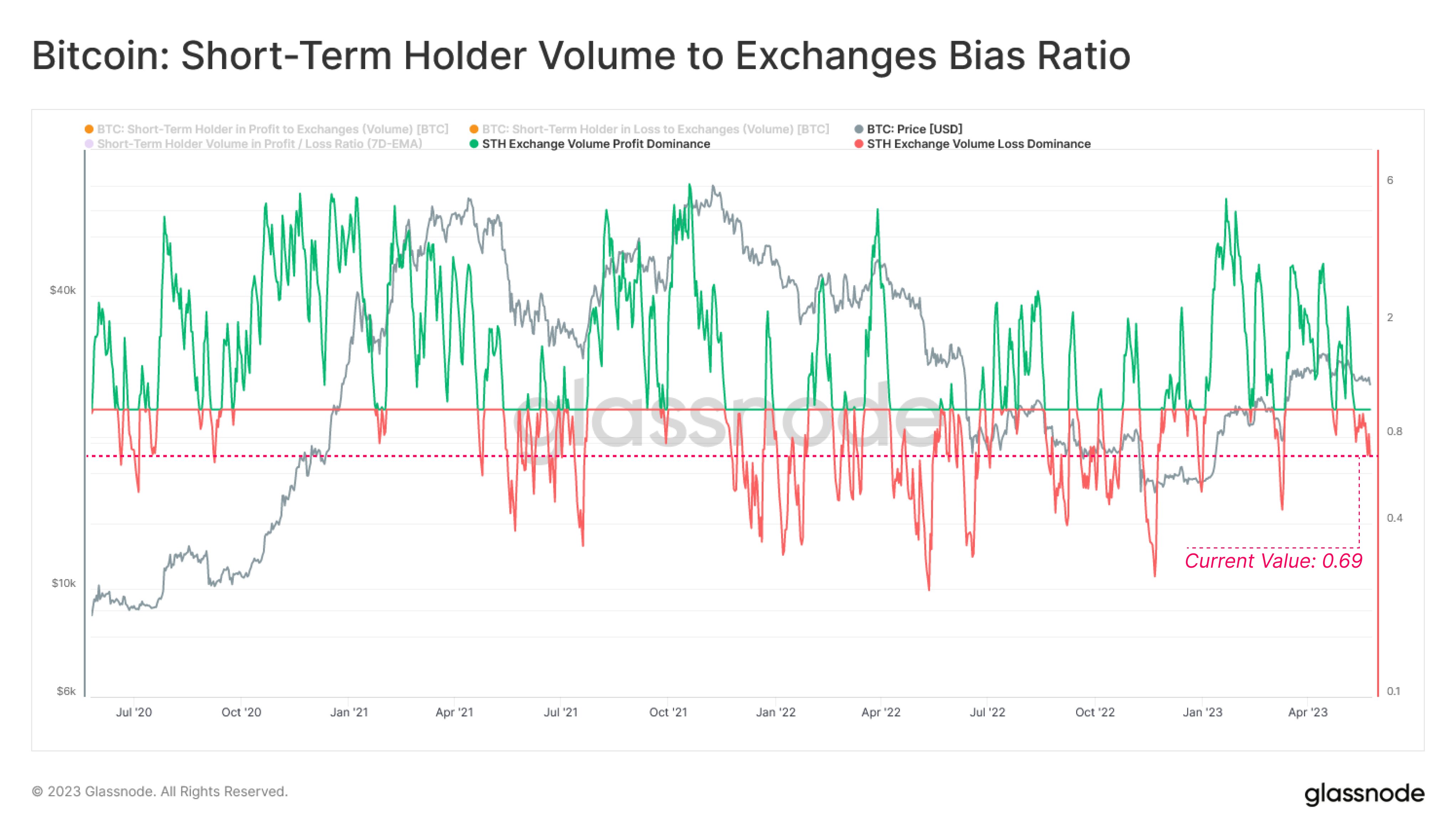On-chain data suggests that a majority of Bitcoin exchange inflows currently come from investors holding their coins at a loss.
Bitcoin Exchange inflow volume is currently trending towards losses
This is evident from data from the on-chain analytics company Glasnode, short-term holders in particular contribute to this inflow of losses. The “exchange inflow” is an indicator that measures the total amount of Bitcoin currently flowing into the wallets of centralized exchanges.
Generally, investors are depositing into these platforms when they want to sell, so a large amount of inflow could be a sign that a sell-off is currently underway in the BTC market. Low values of the metric, on the other hand, imply that holders may not be selling much right now, which could be bullish for the price.
In the context of the current discussion, the exchange inflow itself is irrelevant; a related measure called the “exchange inflow volume profit/loss bias”. As the name of this indicator suggests, it tells us whether the inflows going to the exchanges are currently coming from profit or loss holders.
When this metric has a value greater than 1, it means that most of the inflow volume contains coins that their holders carried with them at a profit. Similarly, values below the threshold imply a dominance of the loss volume.
Now, here is a chart showing the trend in the Bitcoin exchange inflow profit/loss bias over the past few years:
The value of the metric seems to have observed some decline in recent days | Source: Glassnode on Twitter
As can be seen in the chart above, the Bitcoin exchange’s profit/loss inflow volume bias has had a value of more than 1 for most ongoing rallies starting in January of this year.
This suggests that most currency inflows during this period come from profit holders. This makes sense, of course, as each rally generally entices a large number of holders to sell and reap their profits.
However, there have been a few exceptional cases. The first was in March when the asset’s price dipped below the $20,000 level. The trend in the market then shifted to loss selling, implying that some investors who bought around the local top started to capitulate.
A similar pattern has also occurred recently, as the price of the cryptocurrency has stumbled below the $27,000 level. After this dive, the value of the indicator has dropped to just 0.70.
Further data from Glassnode shows that the bias of long-term holders (LTHs), the investors who owned their coins at least 155 days ago, has recently tended towards profits.
Looks like the indicator has a positive value right now | Source: Glassnode on Twitter
The chart shows that the indicator has a value of 1.73 for the LTHs, which implies a strong bias towards profits. Of course, if the LTHs have not sold at a loss, the opposite cohort must be the short-term holders (STHs).
This group seems to have a heavy loss bias currently | Source: Glassnode on Twitter
Interestingly, the value of the indicator for the STHs is 0.69, which is almost exactly the same as the average for the entire market. This would mean that LTHs have contributed relatively little to selling pressure recently.
The STHs selling now are those that have been buying at and near the top of the rally so far and their capitulation could be a sign that these weak hands are currently being purged from the market.
While the indicator hasn’t fallen as low as it did in March, this capitulation could be a sign that a local bottom is near for Bitcoin.
BTC price
At the time of writing, Bitcoin is trading around $26,400, down 1% over the past week.
BTC has struggled recently | Source: BTCUSD on TradingView
Featured image of 愚木混株 cdd20 on Unsplash.com, charts from TradingView.com, Glassnode.com



